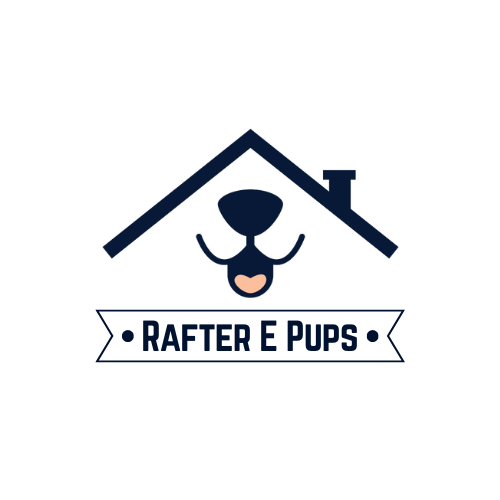A dog’s coat is often the first thing people notice about them. A shiny, healthy coat not only looks good but also indicates overall well-being. Proper grooming, a balanced diet, and regular care are essential for maintaining the luster and health of your dog’s coat.
To keep your dog’s coat shiny and healthy, brush regularly to remove dirt and distribute natural oils. Bathe with a dog-specific shampoo as needed, and ensure a balanced diet rich in Omega fatty acids. Regular exercise and veterinary checkups also support coat health.
Understanding Your Dog’s Coat
Different breeds have different coat types, including single or double coats, curly or straight fur, and short or long hair. Understanding your dog’s specific coat type is crucial for providing the right care. For instance, a Goldendoodle’s curly coat requires different maintenance compared to a Dachshund’s short, smooth fur.
Coat Types:
- Single Coat: A single coat has only one layer of fur, common in breeds like the Dachshund. Single coats are usually easier to manage but may require regular grooming to prevent matting.
- Double Coat: A double coat consists of an outer layer of guard hairs and an inner layer of undercoat. Breeds like the Siberian Husky have double coats that shed heavily and need regular brushing to manage shedding and maintain coat health.
Regular Coat Brushing
Regular coat brushing is a fundamental aspect of maintaining your dog's overall health and appearance. It not only helps keep their fur clean and free of tangles but also distributes natural oils evenly, promoting a shiny and healthy coat. By incorporating brushing into your routine, you can prevent matting, reduce shedding, and enhance your dog's comfort. This simple yet effective practice fosters a bond between you and your pet while ensuring their coat remains in top condition.
Benefits of Brushing:
- Prevents Matting: For long-haired or curly coats, regular brushing prevents tangles and mats from forming.
- Reduces Shedding: Regular brushing helps manage shedding by removing loose hairs before they end up on your furniture and floors.
- Promotes Circulation: Brushing stimulates blood flow to the skin, which promotes healthy hair growth.
Brushing Tips:
- Use the Right Brush: Choose a brush that suits your dog’s coat type. Slicker brushes are ideal for long or curly coats, while bristle brushes work well for short coats.
- Brush Regularly: Brush your dog’s coat at least once a week. Long-haired breeds may require daily brushing.
- Be Gentle: Brush gently to avoid hurting your dog. If you encounter tangles, use a detangling spray to make the process easier.
Regular Bathing for Coat Maintenance
Regular bathing is essential for maintaining your dog’s coat in optimal condition. It helps remove dirt, excess oils, and allergens, leaving their fur clean and fresh. Proper bathing also supports skin health and can enhance the coat's natural shine. By choosing the right products and establishing a consistent bathing routine, you ensure that your dog not only looks great but feels comfortable and healthy.
Bathing Tips:
- Choose the Right Shampoo: Use a dog-specific shampoo that is gentle on their skin. Avoid human shampoos as they can be too harsh.
- Bathing Frequency: Most dogs need a bath every 4-6 weeks. However, this can vary depending on their activity level and coat type. For instance, dogs with oily coats or those that get dirty frequently may require more frequent baths.
- Rinse Thoroughly: Ensure you rinse all shampoo out of your dog’s coat to prevent irritation.
How Does Nutrition Affect Your Dog’s Coat?
Nutrition plays a crucial role in the health and appearance of your dog’s coat. A well-balanced diet rich in essential nutrients supports skin health and promotes a shiny, lustrous coat. Key components include high-quality proteins that provide the building blocks for hair growth and repair, as well as Omega-3 and Omega-6 fatty acids, which help maintain skin hydration and elasticity. These fatty acids, found in sources like fish oil or flaxseed, are particularly important for preventing dryness and flakiness in your dog’s coat.
Inadequate nutrition, on the other hand, can lead to a range of coat issues, including dullness, excessive shedding, and increased susceptibility to skin conditions. A diet lacking in essential vitamins and minerals can impair the body's ability to produce healthy hair, resulting in a lackluster appearance. Ensuring your dog receives a balanced diet with appropriate supplements, if necessary, is key to maintaining a healthy, shiny coat. Regular consultation with your veterinarian can help you tailor your dog’s diet to meet their specific needs and address any nutritional deficiencies.
How Can Regular Exercise Help with Your Dog’s Coat?
Regular exercise significantly contributes to the health and appearance of your dog’s coat by enhancing overall circulation. When your dog is active, increased blood flow helps deliver essential nutrients and oxygen to the skin and hair follicles, promoting healthy hair growth and maintaining a shiny coat. Exercise also helps manage weight, which can prevent obesity-related skin issues and support overall well-being. Additionally, physical activity stimulates the production of natural oils that contribute to a healthy, glossy coat.
Furthermore, exercise aids in reducing stress and anxiety, which can impact your dog’s coat health. Stress and behavioral issues often lead to problems like excessive shedding or skin infections. Engaging in regular physical activity helps alleviate stress and keeps your dog’s mental state balanced, contributing to a more stable and healthier coat. By incorporating consistent exercise into your dog’s routine, you support not only their physical health but also their coat’s vitality and appearance.
Routine Veterinary Checkups
Routine veterinary checkups are a cornerstone of maintaining your dog’s overall health and ensuring their coat remains in optimal condition. Regular visits to the vet allow for early detection and management of potential health issues that could impact your dog’s skin and coat. These checkups provide an opportunity to assess the health of your dog’s coat, address any underlying problems such as parasites or allergies, and receive professional advice on grooming and nutrition. By making routine veterinary visits a priority, you help ensure that your dog’s coat stays vibrant and healthy while supporting their overall well-being.
Dealing with Specific Coat Issues
Different coat types and breeds may face unique challenges. Here’s how to address some common coat issues:
Dry Skin:
- Causes: Dry skin can be caused by environmental factors, poor diet, or underlying health conditions.
- Solutions: Use moisturizing shampoos and conditioners. Consider adding fatty acid supplements to your dog’s diet. Ensure your home has adequate humidity.
Excessive Shedding:
- Causes: Excessive shedding can be due to seasonal changes, poor diet, or health issues.
- Solutions: Regular brushing can help manage shedding. Ensure your dog is on a balanced diet and consult your veterinarian if shedding is abnormal.
Matting and Tangles:
- Causes: Long or curly coats are prone to matting and tangles, especially if not regularly groomed.
- Solutions: Brush regularly and use detangling products. For severe matting, you may need to trim the affected areas or seek professional grooming assistance.
Grooming Tools and Products to Manage Your Dog’s Coat
Using the right grooming tools and products is essential for effectively managing your dog’s coat and maintaining its health and appearance. From brushes and combs to shampoos and conditioners, each tool and product plays a specific role in keeping your dog’s fur clean, smooth, and shiny. Selecting the appropriate grooming items for your dog’s coat type and needs ensures optimal results and can make grooming sessions more enjoyable for both you and your pet. By investing in quality grooming tools and products, you support a healthy, well-maintained coat and strengthen the bond between you and your furry friend.
Essential Grooming Tools:
- Brushes: Slicker brushes, bristle brushes, and combs tailored to your dog’s coat type.
- Shampoos and Conditioners: High-quality, dog-specific products.
- Nail Clippers: Regular nail trimming prevents discomfort and health issues.
- Ear Cleaners: Keep ears clean to prevent infections that can affect coat health.
DIY Grooming versus Professional Grooming
When it comes to grooming your dog, you have the option of handling it yourself or seeking the services of a professional groomer. Each approach has its benefits and considerations, making it important to weigh the pros and cons based on your dog's specific needs and your own grooming capabilities. DIY grooming offers the advantage of cost-effectiveness and convenience, allowing you to maintain your dog’s coat on your own schedule. On the other hand, professional grooming provides expertise and specialized care, which can be particularly valuable for complex grooming needs or breeds with specific coat requirements. Understanding the differences between DIY and professional grooming can help you make an informed decision to best support your dog’s coat health and overall well-being.
DIY Grooming:
- Pros: Cost-effective, allows for regular grooming, and strengthens the bond between you and your dog.
- Cons: Requires time and effort, and may not always achieve the same results as a professional groomer.
Professional Grooming:
- Pros: Professional groomers have the expertise to handle complex grooming needs and can address specific coat issues.
- Cons: Can be more expensive, and may not be necessary for all dogs.
Seasonal Coat Care
Seasonal coat care is essential for maintaining your dog's coat health throughout the changing seasons. As weather conditions fluctuate, your dog’s coat may require different types of care to address varying needs and challenges. In summer, managing heat and shedding becomes a priority, while winter requires attention to protect against cold and dryness.
Adapting your grooming routine to seasonal changes helps ensure your dog’s coat remains in top condition, providing comfort and protection against environmental elements. By understanding and addressing the specific needs of your dog’s coat during each season, you support their overall well-being and keep their fur healthy and vibrant year-round.
Summer Care:
- Keep Cool: Ensure your dog stays hydrated and cool. Consider using cooling mats or providing shade during outdoor activities.
- Manage Shedding: Brush regularly to manage increased shedding.
Winter Care:
- Protect from Cold: Provide a warm, insulated shelter and consider a doggy sweater for extra warmth.
- Avoid Salt and Chemicals: Wash your dog’s paws after walks to remove salt or chemicals that can irritate the skin.
Maintaining a shiny and healthy coat for your dog involves a combination of regular grooming, proper nutrition, and routine veterinary care. By understanding your dog’s specific coat needs and implementing these practices, you can ensure your furry friend looks and feels their best. Remember, a well-maintained coat reflects your dog’s overall health and happiness, so invest the time and effort to keep it in top condition.
Whether you’re brushing, bathing, or just checking in with your vet, each step you take contributes to your dog’s coat health and overall well-being. With the right care, your dog’s coat can shine with health and vitality, showcasing their true beauty.

